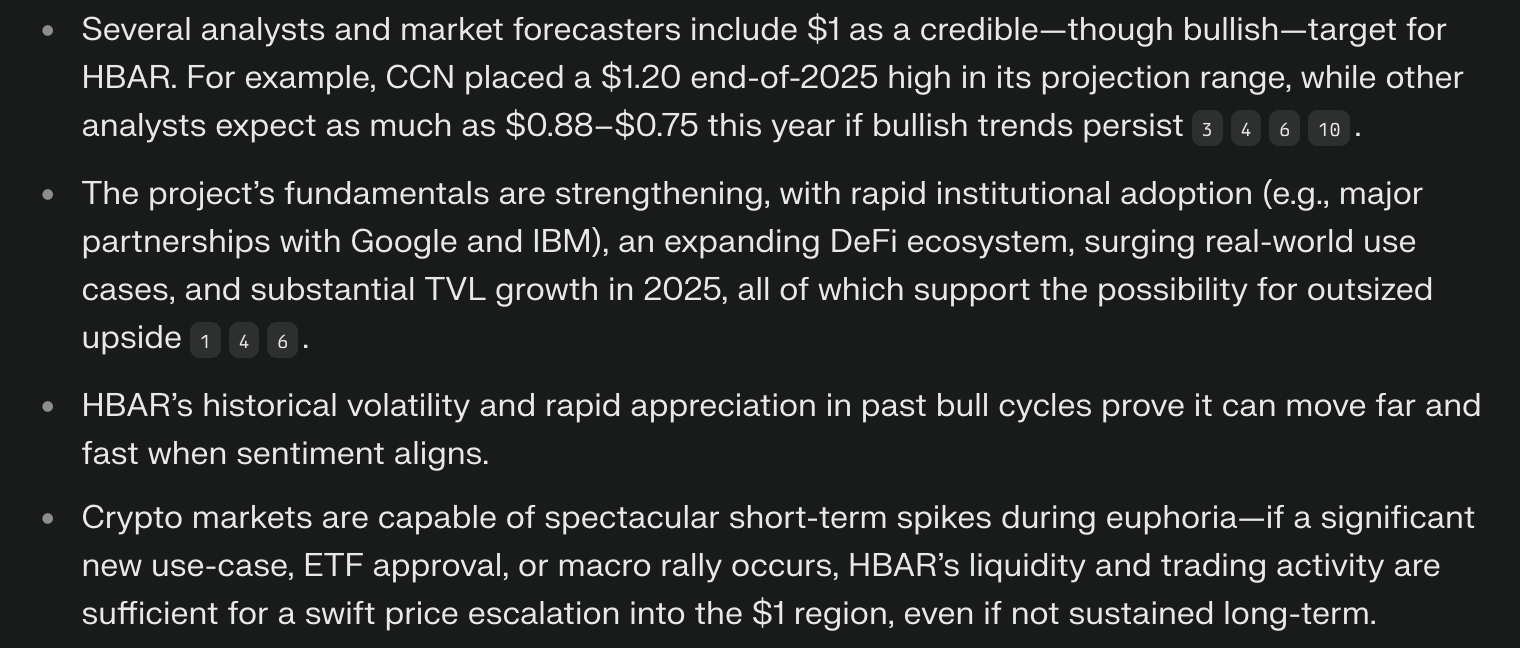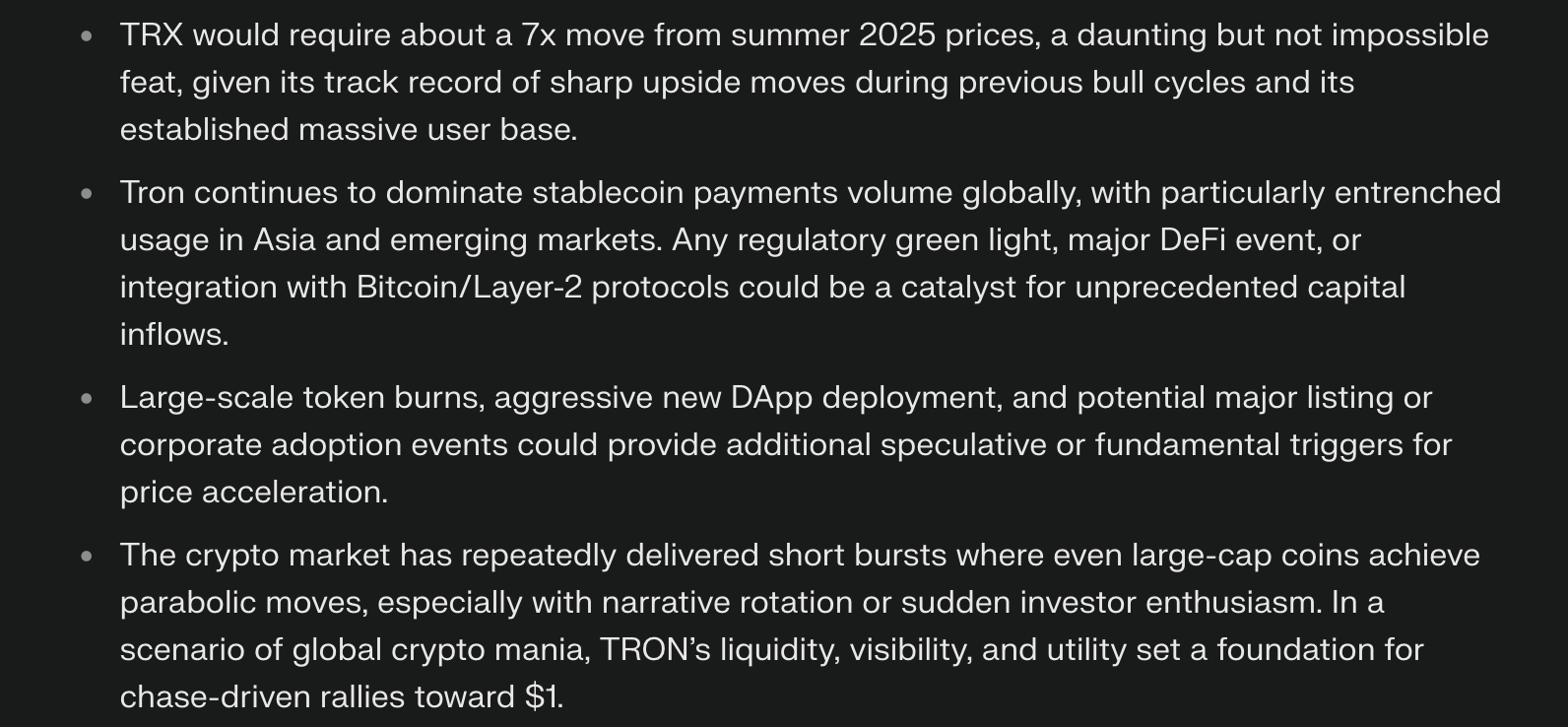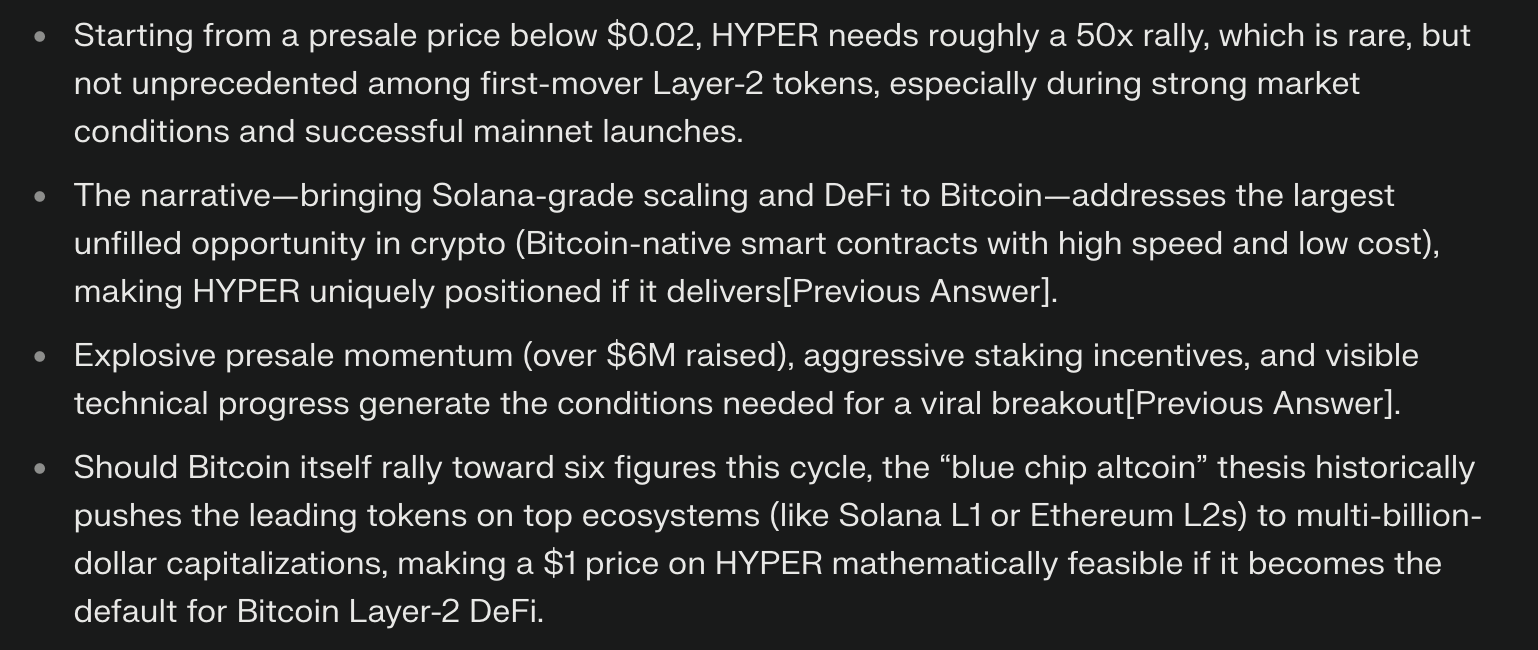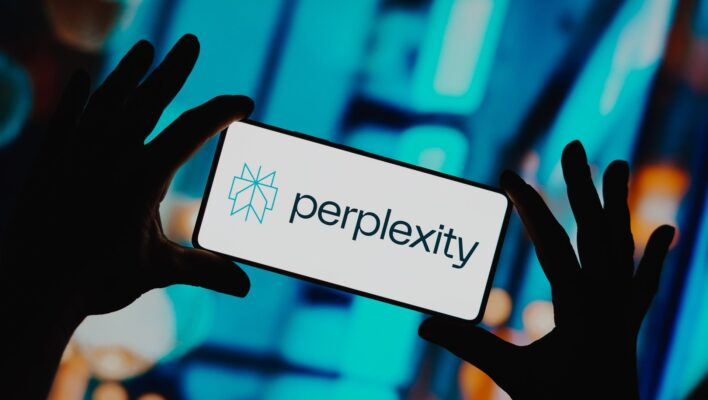This year has been characterized by strong gains across the crypto market, with Bitcoin hitting a new all-time high, alongside several other major altcoins like XRP, BNB, and Solana.
We wanted to identify the cryptocurrencies poised to explode next, focusing on projects that could reach the psychologically significant $1 mark. This level often acts as a price magnet and also a launchpad for further growth, attracting market attention and thus, representing a key area of interest for traders and long-term holders alike.
XRP is a strong example of this. It soared 100% to $1 in November 2024, and then quickly surged over 3x higher in the following months, peaking at $3.65 in July 2025.
Therefore, we asked Perplexity AI to forecast the next crypto to hit $1 in 2025. Let’s explore its three top picks and why it says these projects have big potential.
Hedera
Hedera is a layer 1 blockchain focused on institutional adoption, regulatory compliance, and decentralized finance. Perplexity notes that several analysts have backed Hedera to hit $1 in 2025, with bullish price trends and robust fundamentals fueling the positive outlook.
Regarding fundamentals, Perplexity cites factors such as rapid institutional adoption, an expanding DeFi ecosystem, and evolving real-world use cases as factors that “support the possibility for outsized upside.”
Beyond that, Perplexity notes that previous bull cycles have seen Hedera generate “volatility and rapid appreciation,” which could lead to explosive gains once positive market sentiment returns. A recent example is Q4 2024, where $HBAR rallied approximately 7x in just two months.
Currently trading at $0.25, investors would generate a 4x gain should Hedera rally to $1 this year.

Bitcoin Hyper
Bitcoin Hyper is a Bitcoin layer 2 blockchain designed to address the ecosystem’s core issues of slow speeds, high fees, and limited functionality. It’s built using ZK-rollup technology and Solana Virtual Machine tooling, which means it can deliver heightened scalability without sacrificing security.
This also means the network is interoperable with Solana, allowing Solana developers to port apps and tokens there in minutes. Perplexity says that this narrative of “bringing Solana-grade scaling and DeFi to Bitcoin addresses the largest unfilled opportunity in crypto.”
The project is undergoing a presale and has raised $6 million so far, highlighting strong investor confidence. The raise has begun to snowball in recent weeks, with over $1 million coming this week alone – another sign of growth potential.
Currently priced at $0.01245, Perplexity notes that over a 50x gain is required for $HYPER to hit $1. It admits that such gains are rare, but says $HYPER’s robust use case, combined with bullish market momentum, means that it’s certainly achievable. Visit Bitcoin Hyper.

Tron
Tron is a layer 1 blockchain focused on scalability and user experience. The project excels in the realm of stablecoins, with a total stablecoin market capitalization of $82 billion. That’s only second to Ethereum, which has a $133 billion stablecoin market cap.
In addition to stablecoins, the Tron network hosts various use cases, including gaming, DeFi, and NFTs.
Perplexity underlines that Tron is “particularly entrenched in Asia and emerging markets,” but says that a new ecosystem development like a regulatory greenlight, a major DeFi event, or high-profile integration “could be a catalyst for unprecedented capital inflows.”
The chatbot’s bottom line is that “liquidity, visibility, and utility” are the three core drivers that could catapult Tron’s price to $1 this year. With $TRX currently trading at $0.32, this leaves room for just over a 3x gain.

Disclaimer: This media platform provides the content of this article on an "as-is" basis, without any warranties or representations of any kind, express or implied. We assume no responsibility for any inaccuracies, errors, or omissions. We do not assume any responsibility or liability for the accuracy, content, images, videos, licenses, completeness, legality, or reliability of the information presented herein. Any concerns, complaints, or copyright issues related to this article should be directed to the content provider mentioned above.






